Muscari: description, landing and care
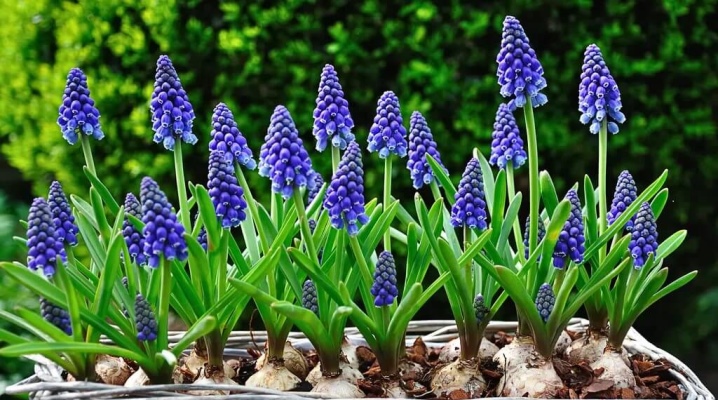
A small beautiful flower with an inflorescence similar to a bunch of grapes fascinates many, but not everyone knows that it is a muscari. Their popularity is emphasized by the numerous names that the flower was given in the common people: mouse hyacinth, viper onion, grape hyacinth or earth lilac.
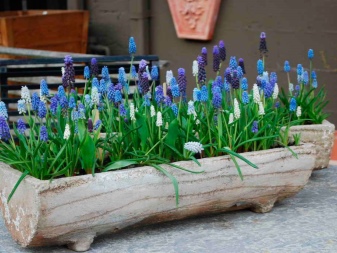

Peculiarities
The plant belongs to bulbous herbaceous perennials and is distinguished by its species diversity. A large number are grown as an ornamental crop, these varieties are distinguished by the most varied colors. The flower bulbs are rather small, oval in shape, their length is about 15–35 mm. Basal leaf plates, in length they reach about 17 cm, on one plant there can be up to 6 pieces. They form in the spring, although they may appear a second time in the fall.
In height, the viper bow can grow to a maximum of 30 cm. On a strong peduncle, flowers are formed with barrel-shaped, cylindrical or tubular perianths, which are formed from 6 connected petals. The stamens are attached to the perianth in 2 rows. The diameter, like the length of the bud, is about 5 mm. Their coloring can have different tones.
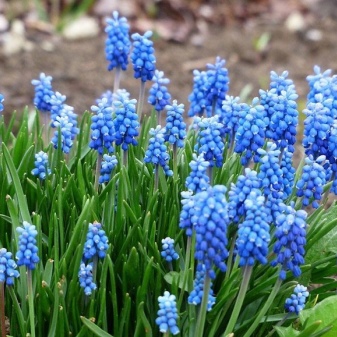

The inflorescence is racemose, approximately 8 cm long, and is characterized by a rather pleasant odor. After flowering, a fruit-box with tiny black seeds is formed, they preserve their germination throughout the year. The viper bow belongs to the ephemeroid, that is, it is at rest most of the time. Bulbs, in which the outer scales are light in color, have the ability to accumulate nutrients, and with the onset of the flowering period they are consumed. In nature, muscari is distributed in many territories: in almost all European countries, in the north of the African continent, in the western regions of Asia and in the Mediterranean.
Some varieties of muscari live even in the highlands.
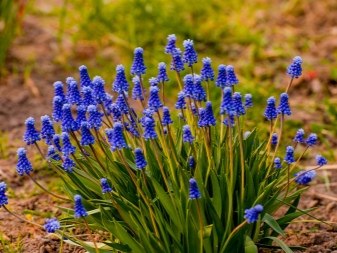
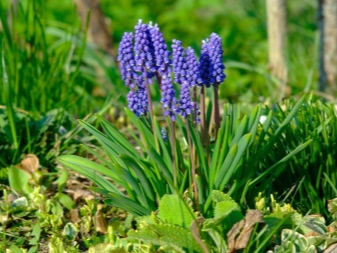
Varieties
There are over 40 species of mouse hyacinth, which also differ in significant varietal diversity. This number of varieties makes it possible to form colorful clumps, in which flowering will last from April to June.
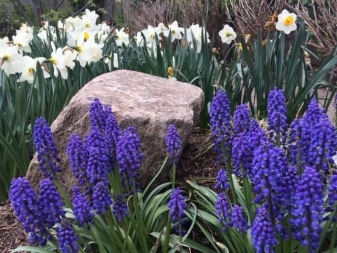
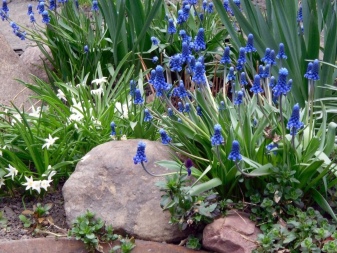
Muscari Armenian
Differs in rather late flowering - in May, but it lasts quite a long time - about 3-4 weeks. The species is one of the most popular. Among the most beautiful varieties are:
- "Blue spike" - it is distinguished by the fact that it does not form capsules with seeds, blue double flowers form a voluminous inflorescence with a strong aroma;
- Fantasy creation - the buds have a terry texture, at the very beginning of the formation they are painted in a green tone, and then they become bright blue;
- "Pink Sunrise" - grows up to 15 cm, blooms with beautiful pink inflorescences;
- Sapphire - has deep blue buds with white edging that form dense inflorescences, the variety has a characteristic long flowering period, and it is also the owner of numerous awards;
- Aes duck - stands out as a dense inflorescence of blue bell buds;
- "Azureum" - with azure-blue inflorescences;
- Superstar - has elongated inflorescences, which consist of a large number of dark blue buds with white edging;
- Artist - in an unblown form, the inflorescence looks like a green bunch of grapes, then the flowers turn blue with a snow-white edging, also characterized by a very pleasant smell;
- Christristmas Perl - often used for forcing, barrel-shaped buds are painted in violet-blue tones, the variety has an international award;
- Peppermint - with inflorescences-pyramids, formed from pale blue flowers with a white edging;
- Big Smile - differs in rather large inflorescences of a restrained blue tone, a white edging runs along the edges of the buds;
- Cantab - Muscari variety Armeniacum of miniature size, has bright blue inflorescences, is winter hardiness;
- Dark eyes - with rich cornflower-blue buds decorated with white dots;
- Saffier - a bright representative of muscari Armenicum, a very thermophilic plant with dark blue elongated flowers that have snow-white edges.
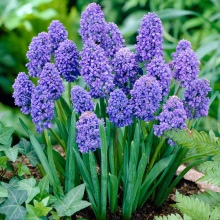
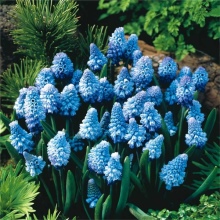
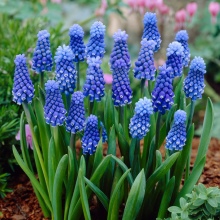
Muscari uviform
The main representative of European varieties. The most common varieties:
- Album - has fragrant buds, very reminiscent of lily of the valley flowers, begins to bloom in April;
- Carneum - flowers have a beautiful pink tone.

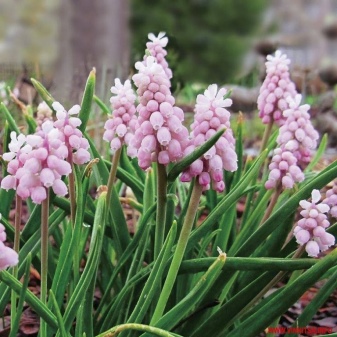
Muscari neglected
Red Book species, notable for the fact that it does not have varietal varieties. The leaf plates are belt-shaped, the flowers are painted in a deep blue color, the edges are in lighter colors. The buds are shaped like lily of the valley flowers.
The height of the bush can reach 20 cm.
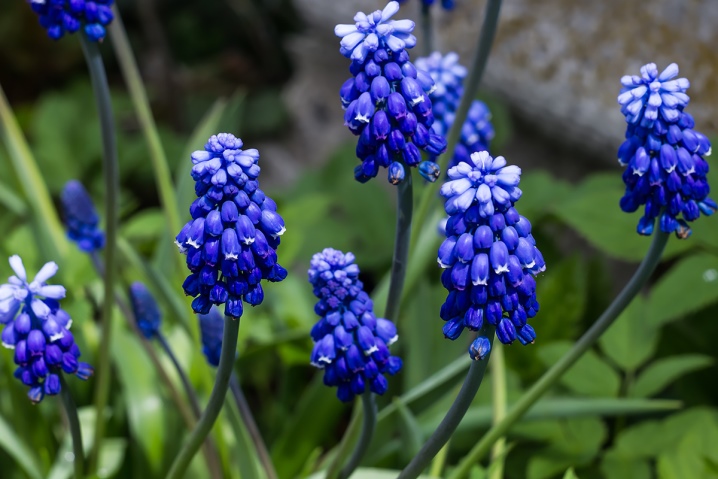
Muscari large-fruited
Belongs to heat-loving plants. Among the varieties, Aurea Fregrans stands out., the unblown buds of which have a purple hue, and then acquire a beautiful yellow color with a brown border. The height is about 30 cm.

Muscari broadleaf
The description of the leaf plates is similar to the tulip ones. The inflorescences are colored in two tones: a sky blue top and a dark purple bottom. It differs in that one bulb forms several peduncles at once. The bush can grow up to 15 cm.

Muscari Oche / Tubergena
Differs in sweet aroma of blue and blue buds. The species is thermophilic and needs mulching for the winter. The plant reaches 25 cm. Famous varieties include:
- Blue magic - sky-blue buds are decorated with a snow-white tuft, belongs to highly decorative varieties and has a pleasant aroma;
- Magicae album - forms white flowers that gather in ovoid inflorescences, grows up to 20 cm;
- Oceanus magia - it is distinguished by a two-color color: the lower buds have a blue tone, and the upper ones are snow-white, blooms in April-May, often grown for distillation.


Muscari crested
It has 3-4 belt-like leaf plates that form a root rosette. Bright purple bell-shaped flowers are collected in a loose racemose inflorescence with a tuft. The bush can reach a height of 70 cm. The most popular variety is Plumosum. Differs in branched shoots, on which lilac inflorescences are formed.
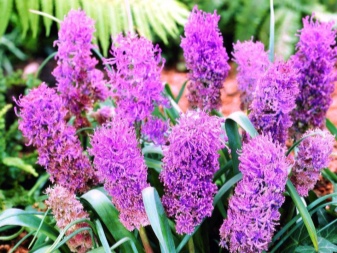
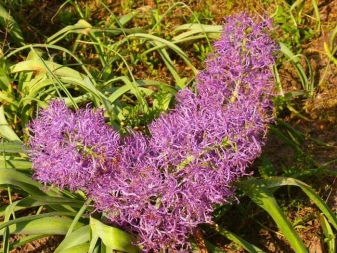
Muscari longiflorum
Flowering occurs at the end of April. The flowers are delicate azure color with a bracts decorated with white teeth.

Muscari is cute
Dissolves buds in February - March. It has narrow leaf plates, the edges of which are bent inward. The height of the bush is only 15 cm. The inflorescence is ovoid, formed from elongated buds of a bright blue tone, their teeth are bent and painted in white.
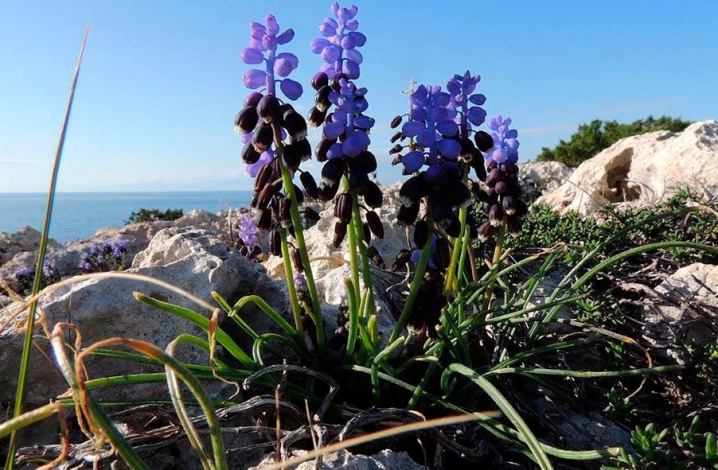
Muscari ambrosia
The variety is distinguished by large buds that form on a strong, straight peduncle. The flowers have an elongated shape, narrowed at the end, and grow on short petioles. Their color changes: first they are purple in color, then they turn greenish-yellow, and at the end of flowering they turn creamy. The leaf plates are dark green, long, with a pronounced groove.
The plant is not particularly tall - only 10–25 cm.

Muscari azure
Representatives of the species reach 15–20 cm in height. Small inflorescences are formed from bell-shaped or cylindrical buds that are blue in color. Its brightness depends on the location on the inflorescence: the upper flowers are much lighter than the lower ones. During the flowering period (April - May), the lower buds are the first to bloom. This muscari has a very pleasant aroma.
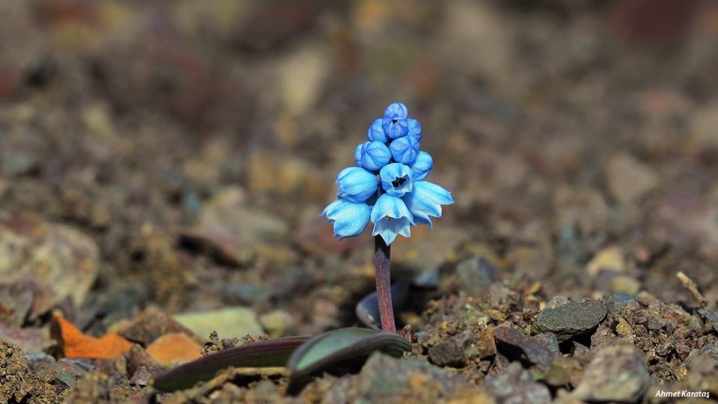
Muscari pale
It has small bell buds that form on low peduncles. Their colors are light blue. Of the varieties stands out "White Rose Beauty" with beautiful light pink inflorescences.


Muscari is fickle
Belongs to the winter-hardy species. It blooms with rather dark bluish-purple buds.
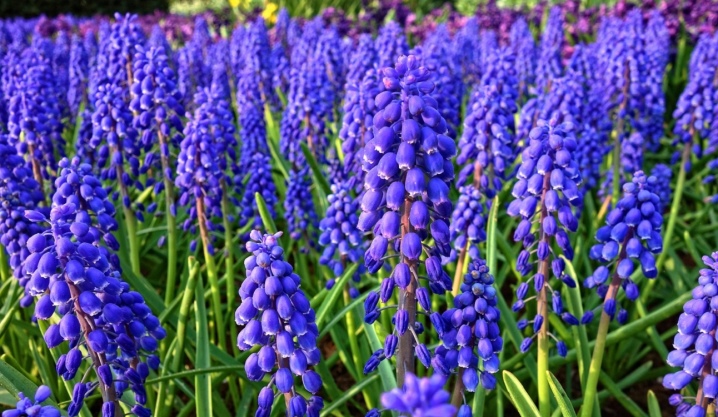
There is also a flower very similar to the viper onion, but belonging to a different family, the muscari lyriope. The plant has a rhizome with outgrowths in the form of cones, leaf plates are long, rigid structure, at times a yellowish strip can appear on them. The inflorescences are dense, with multiple buds of white or light purple tones. Blooms in early autumn.
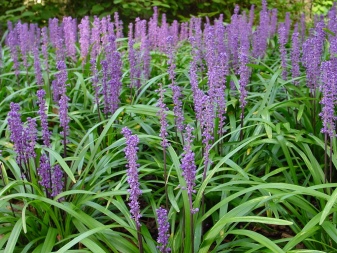
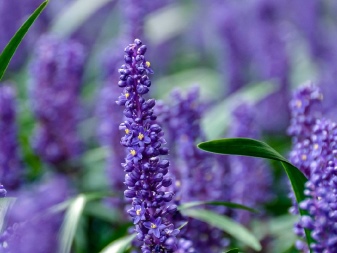
Optimal disembarkation time
It is recommended to plant muscari in autumn - it is better to do this by the end of October. It is possible to plant only those plants that have grown in one place for more than 5 years. You can plant bulbs in early spring, but only when the ground warms up to 3-5 ° C. It is necessary to dig up the soil in advance and add organic matter. Flowers are placed when planting in groups.

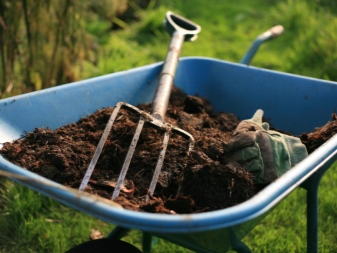
How to plant?
Before planting, the bulbs are examined, the rotten or damaged ones are thrown away, the rest are kept in "Karbofos" for about 30 minutes, and then placed in a solution of potassium permanganate for the same time.
Landing operations are carried out as follows:
- quite a lot of water is poured into the dug holes about 7 cm deep;
- a drainage layer is laid (expanded clay, sand or small stones);
- the diameter of the grooves depends on the selected variety, approximately the same as the length of 3 bulbs;
- the distance between plants of small varieties is 4 cm, and between large ones - about 10 cm;
- the bulbs are placed in pits, covered with a layer of earth of 2-3 cm, moistened with warm water;
- do not forget about the poisonous properties of muscari bulbs, so you need to work with gloves.
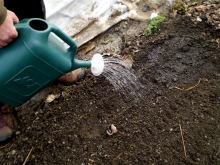
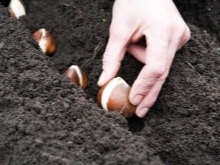

Some varieties (broadleaf, Osh) need a layer of mulch around the root collar.
A perennial does not require additional shelter for the winter; in the absence of snow in severe frosts, you can cover the bushes with spruce branches or sawdust.
How to take care of it properly?
Mouse hyacinth is completely undemanding to care for. Growing it will suit even the most inexperienced grower.
Watering
A plant needs good moisture only at the beginning of the growing season, and then often the earth receives the necessary moisture from melting snow and rains. The rest of the time, the plant is in a dormant period and does not need watering. In the case of a winter with little snow or a rainless spring, the flower should be regularly moistened.
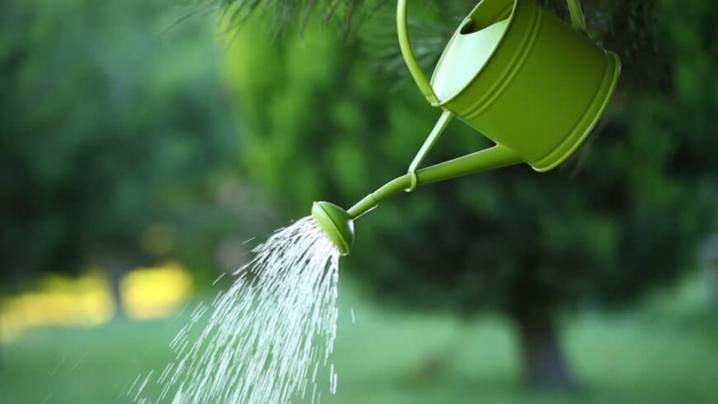
Top dressing
In the presence of not very fertile soil, it is worth feeding it with organic matter. In the fall, when a site is being dug up, humus or compost can be added. With such regular digging, the viper onion is quite capable of growing normally in one place for 10 years. But after this time, it must be transplanted.
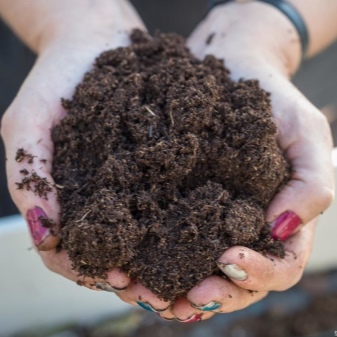
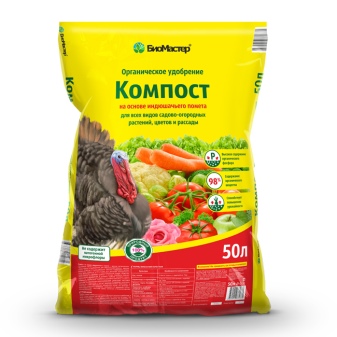
After flowering
At the end of flowering, the peduncles are removed, and the plant is fertilized with potassium-phosphorus dressings. This procedure helps the bulbs to endure the winter more easily. The amount and volume of watering should be gradually reduced, but when the leaves turn yellow and wilted, it should be stopped altogether. If you need to get seeds, you can leave some flower stalks. It is worth remembering that muscari are capable of self-seeding.

Transfer
As a rule, the bulbs of plants older than 5 years are transplanted and this procedure is performed in the fall during digging. Muscari bulbs give quite a lot of children, sometimes up to 30 pieces.Mother bulbs are dug up, separated and planted separately. If a summer transplant is necessary (in the case when the flower has overgrown and interferes with the growth of neighboring crops), do the following:
- the soil is prepared in advance, organic matter is added;
- carefully dig in muscari bushes;
- the recess is made of such a size as to place the plant together with an earthen lump;
- with a shovel, move the bush into the hole and sprinkle it with soil in a circle;
- moisturize well.
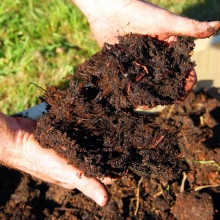
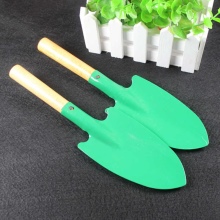
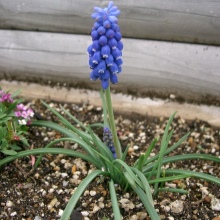
If done correctly, mouse hyacinth will bloom next spring.
Reproduction methods
Grow muscari bushes can be done in 2 ways:
- bulbs;
- seeds.

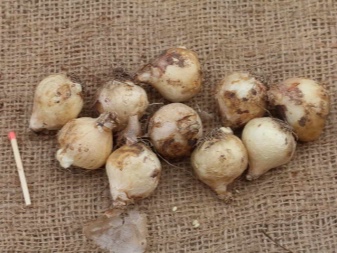
Reproduction by baby bulbs begins in July, so that they have time to take root well before the onset of cold weather. They do it like this:
- after the end of flowering, they make notes on the ground where the bush is located (in summer it will not be visible);
- carefully dig in in that place, separate the bulbs from the soil and inspect for damage or disease (such are immediately thrown away);
- bulbs are calibrated in size, small ones can be planted several pieces together;
- it is recommended to plant muscari in groups, so they have a more attractive appearance;
- grooves or pits are made in the prepared area, sand is placed on the bottom, and moistened well;
- spread the onions, sprinkle on top with a small amount of compost, and then earth.
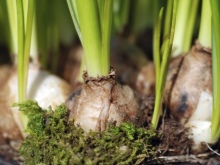
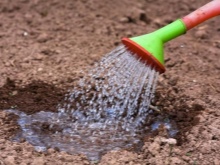
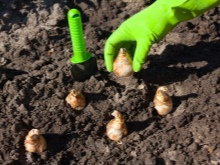
It must be remembered that the splendor of the bushes and the saturation of their colors directly depend on the nutritional value of the soil.
A large number of varieties of viper onions tend to multiply by self-seeding. During cultivation, this method is rarely used, since it takes 4 years to wait for flowering. Ripe and harvested seeds are sown immediately on a plot with well-fertilized soil. When using the seedling propagation method of muscari, the following actions are performed:
- the seeds are kept wrapped in a damp napkin, and then in the refrigerator for 3-4 months before planting (the napkin should be moistened all the time);
- they begin to do this around October, then in February the seeds can be sown in containers;
- they are placed to a depth of no more than 1 cm, the soil in the container should be well fertilized with organic matter;
- care consists in removing weeds and moderate moisture;
- from March, the seedlings are gradually taken out into the fresh air, and in April they are planted in open ground.
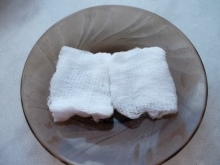
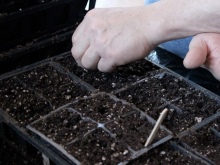
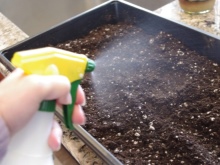
Storing the bulbs
The viper onion belongs to perennials, in one place it can be grown for up to 10 years without consequences for the appearance. In addition, the plant is resistant to frost, and bulbs do not freeze in winter. If it becomes necessary to dig up the bulbs, you should know how to store them correctly:
- the bulbs dry well for several days;
- placed in peat or sand (wet) for storage;
- regularly inspected to avoid decay;
The temperature in the room should be kept at 17 ° C, and the humidity should be about 70%.
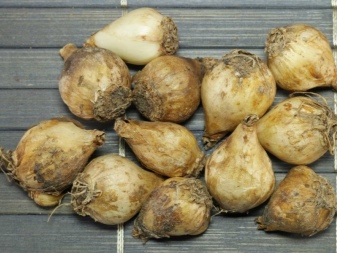

Diseases and pests
Muscari has a fairly strong immune system, but it can still sometimes get sick or damaged by pests. Of the diseases, a mosaic is often manifested - a virus that carries aphids. The disease is characterized by a small plant growth, as well as deformation of the leaf plates. Infected bulbs cannot be cured - they are burned. To prevent this disease, it is necessary to prevent the appearance of aphids on the plant.
Most of the pests do not touch the muscari due to the poisonous properties of the bulb, but some can still cause quite serious damage to the plant.
- Aphid dangerous in that it carries diseases that are incurable for muscari. A strong soapy solution is used against it. If there are garden ants on the site, then there will be aphids, since they breed it. In this case, the first step is to get rid of the ants.
- Spider mite manifested by the appearance of a thin web on the plates.The insect feeds on the sap of the plant, making it weakened. The fight against it consists in processing the flower with insecticidal preparations "Aktofit", "Fitoverm".
- Slugs appear on the plant from excessive moisture. Remove them mechanically and, if possible, adjust watering.
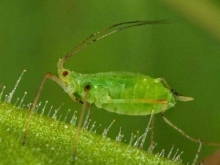
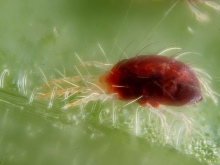
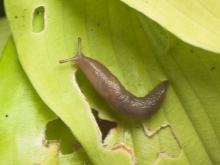
Use in landscape design
Muscari look most advantageous in wide plantings in a flower bed. They also blend very well with other flowering crops in a variety of mixborders and flower arrangements. Often, mouse hyacinth is planted around tree boles. Muscari look extremely beautiful and gentle along the paths, in the ridges and rock gardens.
They can be planted with both ground cover crops and large flowers. Muscari will adorn any planting and give it a brighter and more graceful look, but it's a pity that not for long.

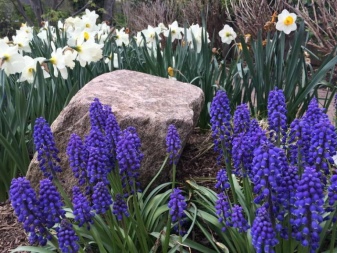
For information on how to grow muscari, see the next video.







































































































The comment was sent successfully.